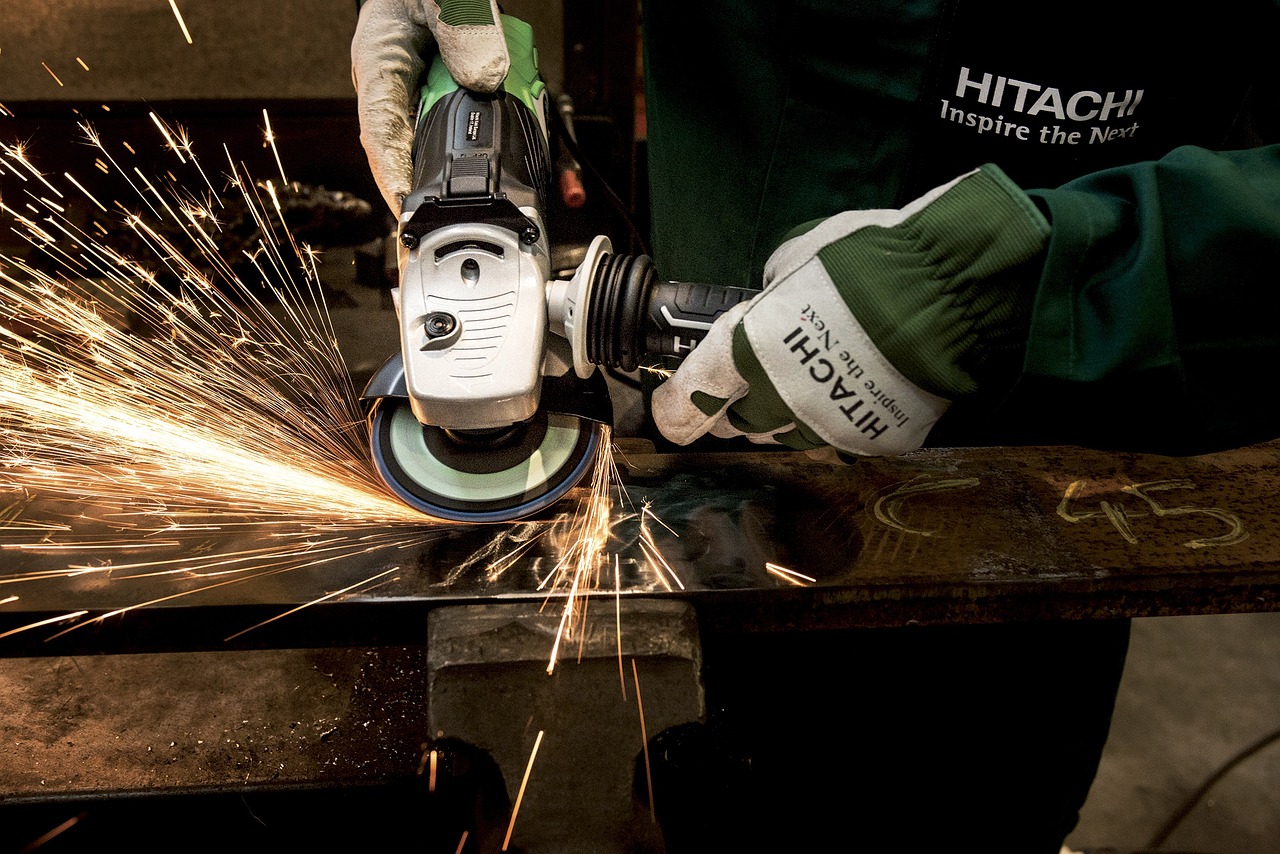Business
The Self-Storage Industry and the Fluctuation from Corona Virus

In recent years, the self-storage industry in the United States has been largely dependent upon what insiders call the four D’s: death, divorce, displacement, and disaster. However, the Coronavirus pandemic, combined with reckless expansion and aggressive competition, resulted in what seems to be a few recession-proof elements of the commercial real estate industry.
The industry has been at its peak of expansion since the last downturn because of the lockdown and quarantine period when companies and people increased their need for storage space. Gradual increases in demand and price made rivals eager to bring innovation into the industry by expanding technology and customer-focused services. For example, The Storage Group, one of the companies that provide self-storage feasibility and reliable services, was founded by Brian Pelski and Larry Hanks in 2010. Steve Lucas currently holds the charge of the CEO and managing partner. The company remained focused on innovation and brought its idea and a progressive way for succession through ClickandStor® Online Rental Suite. It was the first company to welcome the latest technology to the industry and created the first fully-integrated, online move-in platform available to the self-storage industry. As a result, The Storage Group collaborated and integrated with several companies, including Self Storage Manager, Storage Commander, Doorswap, Web Self-Storage, SiteLink, and Storage.
ClickandStor provides the most cost-effective and easiest way for the end user to rent storage and manage their online storage account. It enables the user to browse several facilities listed on its directory website clickandstor.com allowing customer access, storage rentals, reservations, payments, and more. ClickandStor is also provided on individual storage websites to make the rental process simple to navigate online. Whether customers visit the facility website or come through the online directory, ClickandStor allows them to register, digitally sign in and make all required payments without human interaction.
ClickandStor is transforming the way of self-storage businesses and their applications. With its new features and technology, users only need a cell phone or a computer to access the entire unit from the storage website, gateway access code, and payment schedules.
Value-added features of ClickandStor include a 3D value pricing map, 3D calculator, multi-lingual marketplace, enhanced security features, and more. The online rental tool provides daily 24/7 updates of inventory, units, and pricing in real time for tenants regarding reservations and rentals through integrating with the self-storage property management software systems.
Pandemic and Rents
Rents went to their heights during the pandemic. However, according to a research site, Yardi Matrix, the rates began to fall in June for new customers before one-time discounts for a 10×10 unit excluded heat and air-conditioning. To be sure, around 4.3 percent declined nationwide on an annual basis. Moreover, a fall of about 6.7 percent for climate control units was seen. Interestingly, this was the case in the pandemic only. Whereas coronavirus cases are halted around the country, the leaders are putting fewer restrictions on schools and businesses. Thereby, the industry of self-storage industry is under progress revival.
The self-storage industry started in the 1960s when consumers led businesses in America to buy more stuff than they had the capacity for. Ever since then, the industry has been in progress and steadily growing.
The rates of climate control units and without touched their height nationwide in the previous years after the demand ballooned. Americans with available income bought more stuff and realized the need for more storage places to store them.
According to IBIS World research, the number of self-storage facilities boomed nationwide and grew to more than 60,000 in 2020 from 47,000 in 2008. At the same time, the revenue increased 2.6 percent annually to $38.6 billion in 2019 from 2014.
The industry also faced numerous challenges during the pandemic, like any other business similar to the ones meant to protect residential tenants. Especially in Los Angeles, where in June, an ordinance was passed that deferring rent or late fees for self-storage will expel and ban the tenants.
Self-storage suppliers struggled with problems similar to other industries, like keeping surfaces cleaner. This varied from state to state. However, the lockdown orders were essential to follow for every business.
Revenue took a halt when rents stagnated. By the end of May, the average rent for the self-storage companies was about the same as the previous year, according to Green Street Advisors. But this did not stop self-storage companies from developing or taking a break. With the immense need, the valuation is expected to grow to $115.62 billion in 2025. According to this prediction, the compound annual growth rate would be 134.79% over the forecast period of 2020-2025, increasing the need for supportive self-storage businesses like The Storage Group.
Business
13 Reasons Investors Are Watching Phoenix Energy’s Expansion in the Williston Basin

As energy security becomes a growing priority in the United States, companies focused on domestic oil production are gaining attention from investors. One such company is Phoenix Energy, an independent oil and gas company operating in the Williston Basin, a prolific oil-producing region spanning North Dakota and Montana.
Phoenix Energy has established itself as a key player in this sector, expanding its footprint while offering structured investment opportunities to accredited investors. Through Regulation D 506(c) corporate bonds, the company provides investment options with annual interest rates ranging from 9% to 13%.
Here are 13 reasons why Phoenix Energy is attracting investor interest in 2025:
1. U.S. energy production remains a strategic priority
The global energy landscape is evolving, with a renewed focus on domestic oil and gas production to enhance economic stability and reduce reliance on foreign energy sources. The Williston Basin, home to the Bakken and Three Forks formations, continues to play a critical role in meeting these demands. Phoenix Energy has established an operational footprint in the basin, where it is actively investing in development and production.
2. Investment opportunities with fixed annual interest rates
Phoenix Energy bonds offer accredited investors annual interest rates between 9% and 13% through Regulation D 506(c). These bonds help fund the company’s expansion in the Williston Basin, where it acquires and develops oil and gas assets.
3. Record-breaking drilling speeds in the Williston Basin
Phoenix Energy has made significant strides in drilling efficiency, ranking among the fastest drillers in the Bakken Formation as of late 2024. By reducing drilling times, the company aims to optimize operations and improve overall production performance.
4. Expansion of operational footprint
Since becoming an operator in September 2023, Phoenix Energy has grown rapidly. As of March 2025, the company has 53 wells drilled and 96 wells planned over the next 12 months.
5. Surpassing production expectations
Phoenix Energy’s oil production has steadily increased. By mid-2024, its cumulative production had exceeded 1.57 million barrels, outpacing its total output for 2023. The company projected an exit rate of nearly 20,000 barrels of oil equivalent per day by the end of March 2025.
6. High-net-worth investor offerings
For investors seeking alternative investments with higher-yield opportunities, Phoenix Energy offers the Adamantium bonds through Reg D 506(c), which provides corporate bonds with annual interest rates between 13% and 16%, with investment terms ranging from 5 to 11 years, and a minimum investment of $2 million.
7. Experienced team with industry-specific expertise
Phoenix Energy’s leadership and technical teams include professionals with decades of oil and gas experience, including backgrounds in drilling engineering, land acquisition, and reservoir analysis. This level of in-house expertise supports the company’s ability to evaluate acreage, manage operations, and execute its long-term development plans in the Williston Basin.
8. Focus on investor communication and understanding
Phoenix Energy prioritizes clear investor communication. The company hosts webinars and provides access to licensed professionals who walk investors through the business model and operations in the oil and gas sector. These efforts aim to help investors better understand how Phoenix Energy deploys capital across mineral acquisitions and operated wells.
9. Managing market risk through strategic planning
The energy sector is cyclical, and Phoenix Energy takes a structured approach to risk management. The company employs hedging strategies and asset-backed financing to help mitigate potential fluctuations in the oil market.
10. Commitment to compliance
Phoenix Energy conducts its bond offerings under the SEC’s Regulation D Rule 506(c) exemption. These offerings are made available exclusively to accredited investors and are facilitated through a registered broker-dealer to support adherence to federal securities laws. Investors can review applicable offering filings on the SEC’s EDGAR database.
11. Recognition for business practices
As of April 2025, Phoenix Energy maintains an A+ rating with the Better Business Bureau (BBB) and is a BBB-accredited business. The company has also earned strong ratings on investor review platforms such as Trustpilot and Google Reviews, where investors often highlight clear communication and transparency.
12. A family-founded business with a long-term vision
Led by CEO Adam Ferrari, Phoenix Energy operates as a family-founded business with a focus on long-term investment strategies. The company’s leadership emphasizes responsible growth and sustainable development in the Williston Basin.
13. Positioned for long-term growth in the oil sector
With U.S. energy demand projected to remain strong, Phoenix Energy is strategically positioned for continued expansion. The company’s focus on efficient drilling, financial discipline, and structured investment offerings aligns with its goal of building a resilient and growth-oriented business.
Final thoughts
For investors looking to gain exposure to the U.S. oil and gas sector, Phoenix Energy presents an opportunity to participate in a structured alternative investment backed by the company’s operational expansion in the Williston Basin.
Accredited investors interested in learning more can attend one of Phoenix Energy’s investor webinars, which are hosted daily throughout the week. These sessions provide insights into market trends, risk management strategies, and investment opportunities.
For more information, visit the Phoenix Energy website.
Phoenix Capital Group Holdings, LLC is now Phoenix Energy One, LLC, doing business as Phoenix Energy. The testimonials on review sites may not be representative of other investors not listed on the sites. The testimonials are no guarantee of future performance or success of the Company or a return on investment. Alternative investments are speculative, illiquid, and you may lose some or all of your investment. Securities are offered by Dalmore Group member FINRA/SIPC. Dalmore Group and Phoenix Energy are not affiliated. See full disclosures.
This article contains forward-looking statements based on our current expectations, assumptions, and beliefs about future events and market conditions. These statements, identifiable by terms such as “anticipate,” “believe,” “intend,” “may,” “expect,” “plan,” “should,” and similar expressions, involve risks and uncertainties that could cause actual results to differ materially. Factors that may impact these outcomes include changes in market conditions, regulatory developments, operational performance, and other risks described in our filings with the U.S. Securities and Exchange Commission. Forward-looking statements are not guarantees of future performance, and Phoenix Energy undertakes no obligation to update them except as required by law.
-

 Tech4 years ago
Tech4 years agoEffuel Reviews (2021) – Effuel ECO OBD2 Saves Fuel, and Reduce Gas Cost? Effuel Customer Reviews
-

 Tech6 years ago
Tech6 years agoBosch Power Tools India Launches ‘Cordless Matlab Bosch’ Campaign to Demonstrate the Power of Cordless
-

 Lifestyle6 years ago
Lifestyle6 years agoCatholic Cases App brings Church’s Moral Teachings to Androids and iPhones
-

 Lifestyle4 years ago
Lifestyle4 years agoEast Side Hype x Billionaire Boys Club. Hottest New Streetwear Releases in Utah.
-

 Tech6 years ago
Tech6 years agoCloud Buyers & Investors to Profit in the Future
-

 Lifestyle5 years ago
Lifestyle5 years agoThe Midas of Cosmetic Dermatology: Dr. Simon Ourian
-

 Health6 years ago
Health6 years agoCBDistillery Review: Is it a scam?
-

 Entertainment6 years ago
Entertainment6 years agoAvengers Endgame now Available on 123Movies for Download & Streaming for Free
